Dr. Barbara Koltuska-Haskin is a clinical neuropsychologist in private practice in Albuquerque, New Mexico. With over thirty years of clinical experience, and a background in research, she is an expert in brain health who strives to provide comprehensive and compassionate care. Her first book, How My Brain Works: A Guide to Understanding It Better and Keeping It Healthy (Golden Word Books, 2020), is “an everyday guide to harnessing our most powerful mental tools in shaping the healthful and successful lives we all seek.” You’ll find Dr. Barb on her website at DrKoltuska.com.
 Why did you write How My Brain Works?
Why did you write How My Brain Works?
The purpose of my book, which comes from my more than thirty years of experience as a neuropsychologist, is to explain how neuropsychological evaluation can help people understand how their brain is working, in order for them to reach their full potential and/or to help them heal if they are recovering from brain trauma or other brain-related problems or diseases.
I always talk to my patients about a healthy lifestyle which includes healthy eating, exercising, mindfulness, gratitude, and getting enough sleep. Our brain doesn’t work in isolation. The healthier our body is, the better our brain will function. I truly believe that food is our medicine. Therefore, I share favorite healthy recipes. My lifelong hobby has been organic gardening and organic cooking, using produce mainly from my garden. I also share how to use commonly grown weeds, herbs, and edible flowers to enhance the flavor of meals so there is no need to use heavy sauces full of chemicals, calories, or artificial flavor enhancements. As a bonus, some readers may lose weight in the process.
I hope the book inspires others to take the first step on the road to a healthy, fulfilling, and successful life — this was the main reason I wrote this book.
What was the spark that got you started on the book?
This book probably would never have been written if not for the famous writer Elizabeth Gilbert. I was “writing” How My Brain Works for about three years in my mind before I decided to sit down and actually start writing it. I have a very busy practice, and caring for my patients has always been my priority. I felt that I never had enough time to start working on my book and had pushed it out of my to-do list. However, several years ago I saw Ms. Gilbert on TV talking about aspiring writers who complain they have no time to write. “Hmm, that’s me,” my inner voice said. Ms. Gilbert had brilliant advice for all those people. She said something like, “If you are really in love, no matter how busy you are, you will always find time to see your lover. So fall in love with your book and find time to write it. Assign time every week. It can be as little as fifteen minutes.” That did it for me. I decided to work on my book every Monday evening and try to write about one page. I kept this promise to myself and tried not to miss a Monday evening. It took over three years, but I did it. Therefore, I thank her in my book for this advice. I have never met her personally, but I hope I will in the future.
What was the hardest part of putting this project together, and what was the easiest?
The hardest part was keeping the promise to myself that I would work on my book every Monday. I was able to do it most of the time. The easiest was to take pictures of flowers and herbs from my garden for my book. It was fun!
Do you have a favorite quote from the book that you’d like to share?
The motto for my book is the famous saying of the mindfulness/meditation guru Dr. Jon Kabat-Zinn: “As long as you are breathing, there is more right with you than wrong with you.” Also, I strongly believe and always tell my patients, “Knowing how your brain works is powerful, because what you don’t know could hurt you. If you know what works well in your brain and what does not — for example, which of your brain functions are strong and which are weaker — you can learn to use the good parts of your brain to compensate for those that aren’t that good. For example, a person’s good visual memory can be used to facilitate compromised verbal memory. You can also do specific mental exercises to work on improving that part of your brain that isn’t functioning well.”
How did the book come together?
The book writing and research took three years. The editing cycle and searching for the publisher took about two more years. I mailed the finished manuscript to my friends and professional colleagues and asked them to give me feedback. I wanted them to honestly tell me what was wrong with the book. All of them loved it and said it had a lot of important information and should be published. I did not believe them. I felt they were being nice to me because they were my friends, so I sent the manuscript to an independent and well-regarded editor. When he got back to me, he started his evaluation with the sentence, “I was very impressed with your manuscript.” At that point, I knew I had written a good book that needed to be published. After a long and frustrating search, I finally found a reputable publisher. An email from the publisher’s editor noted that “this is an excellent manuscript.” I looked at his email and my first thought was that he just tried to be nice to me. And then I started thinking, “He is an editor, he reads a lot of manuscripts because this is his job. My book was already accepted for publication, so he has no incentive to be nice to me. If he thinks this is an excellent manuscript, it must be.” I told myself, “Barbara, pat yourself on the shoulder,” and I did.
What interesting facts did you discover while doing research for the project?
I learned a lot of detailed and important information about the health benefits of herbs and common weeds. As a matter of fact, most herbs are just weeds, which is a source of their potency. They can survive in all kinds of soil and air temperatures. I knew most of them had a health benefit. I had grown them and used them in my kitchen for many years, but I did not know their detailed health benefits. I was amazed to find out how many vitamins and microelements they contain. Also, most of the research on Alzheimer’s emphasizes that the best Alzheimer prevention is daily aerobic exercise, like a brisk walk. Isn’t it amazing that such a simple and totally cost-free thing like walking is the most important prevention?
What was the most rewarding aspect of writing How My Brain Works?
The most rewarding aspects are all of the positive feedback from my readers and the great reviews on Amazon, Kirkus, and Online Book Club. My readers greatly appreciate the simple but comprehensive guide to brain functioning and healthy living that helps them overcome, or better manage, their brain problems. Also, they like the common language of the book and the easy and engaging reading.
Have you tried your hand at writing fiction?
Not yet, but I believe I have a creative mind and a lot of stories to tell, so I may try some novels in the future.
How has music helped you in your personal, professional, or writing journey?
I always loved music, especially classical music. I have many years of formal musical education in piano and voice, and I am a classically trained mezzo-soprano. I have a CD on the internet titled Old Masters Love Songs (I think people can listen to it on Spotify now). It is very beautiful and relaxing music from the 17th and 18th century, mostly Italian. I get a lot of praises for it.
I strongly believe that studying music for many years gives a person specific sensitivity training. You need to be able to recognize and feel the emotions that the composer “placed” in his masterpiece and be able to “run” them thorough your emotional channels and perform them in such a way that the audience can feel them as well. The music you perform needs to emotionally “speak” to them. This specific training makes me very sensitive to other people’s emotions, so I can quickly “sense” what may be going on with them. It also helps me to establish a good rapport with patients and makes them feel at ease in my office.
What are your hobbies or creative outlets?
I am an organic gardener, and I eat mostly out of my garden. I also share my garden goodies with friends, neighbors, and family and freeze the rest for winter, or I pickle the vegetables. As a matter of fact, all my closest neighbors started their gardens after getting my garden goodies for some time. I am very happy that I inspired them. Now we share seeds, starter plants, and leftovers from our gardens. We are a community and it is wonderful.
Is there anything else you’d like readers to know?
I would like readers to know that if they have (or suspect they may have) brain problems, it is not the end of the world. Most problems can be treated and/or successfully managed, and people can still have a quality of life. We only have one life, why not make it as enjoyable as it can be?
 KL Wagoner (writing as Cate Macabe) is the author of This New Mountain: a memoir of AJ Jackson, private investigator, repossessor, and grandmother. Kathy posts to a speculative fiction blog at klwagoner.com and writes about memoir at ThisNewMountain.com.
KL Wagoner (writing as Cate Macabe) is the author of This New Mountain: a memoir of AJ Jackson, private investigator, repossessor, and grandmother. Kathy posts to a speculative fiction blog at klwagoner.com and writes about memoir at ThisNewMountain.com.





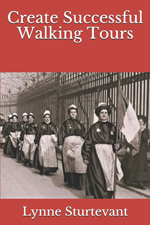
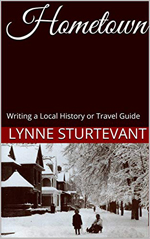
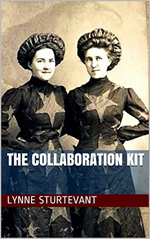








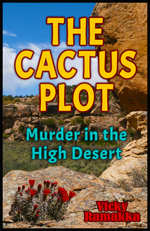
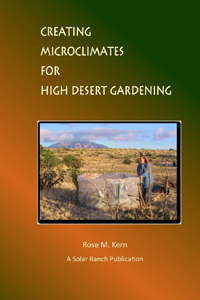
 How did the book come together?
How did the book come together?
